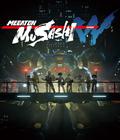DLSS 2.0 gives games the performance headroom to maximize quality settings and increase output resolution.
Artificial intelligence is revolutionizing gaming - from in-game physics and animation simulation to real-time rendering and AI-assisted broadcasting features. With Deep Learning Super Sampling (DLSS), NVIDIA set out to redefine real-time rendering through AI-based super resolution - rendering fewer pixels and then using AI to construct sharp, higher resolution images. With our latest 2.0 version of DLSS, we’ve made big advances towards this vision.
Powered by dedicated AI processors on GeForce RTX GPUs called Tensor Cores, DLSS 2.0 is a new and improved deep learning neural network that boosts frame rates while generating beautiful, crisp game images. It gives gamers the performance headroom to maximize ray tracing settings and increase output resolutions.
December finds CRSED: F.O.AD. (formerly Cuisine Royale, Dec. 3), Moonlight Blade (Dec 7), Mount & Blade II: Bannerlord (coming in Dec), and Scavengers (available in ‘tech tests’ today ) all joining the roster of DLSS games, taking the tally of DLSS games to 30 titles.
Turning on DLSS will see performance boosted in each of these games:
- DLSS increases performance by up to 40% in CRSED: F.O.A.D., which means every GeForce RTX GPU can play the game at 4K in excess of 90 FPS.
- DLSS can more than double your frame rate in Moonlight Blade, which means every GeForce RTX GPU can play the game at 4K in excess of 60FPS.
- DLSS increases performance by up to 50% in Mount & Blade II: Bannerlord, which means every GeForce RTX GPU can play the game at 4K in excess of 60FPS.
- DLSS increases performance by up to 40% in Scavengers, which means every GeForce RTX 30 Series GPU can play the game at 4K in excess of 60FPS.
Minecraft is Now Officially RTX ON!.
Today Minecraft with RTX for Windows 10 moves from beta to official release.
Minecraft with RTX supports NVIDIA DLSS, along with path tracing, meaning all the lighting in the game is ray traced. Minecraft with RTX players will see everything enhanced with a special Physically Based Rendering texture pack in supported worlds, which interplays with the ray-traced effects to further enhance the experience. Turning on DLSS can more than double your frame rate!
To celebrate the release of Minecraft with RTX, NVIDIA is releasing 2 new worlds, bringing the total number of official RTX worlds for Minecraft to 15. Colosseum world is available now and Dungeon Dash will be coming soon.
Benchmarking with Minecraft with RTX
Looking to benchmark? Check out the built -in benchmark inside the Portal Pioneers RTX world that can be found on the Minecraft marketplace. The benchmark is simple to get going and is roughly 60 seconds long. You’ll want your favorite frame viewing tool to capture performance data during the minecart ride.
Cyberpunk 2077’s Night City Glistens with DLSS and Ray Tracing
Cyberpunk 2077 is coming too, and is loaded with tech including ray-traced shadows, reflections, diffuse illumination, global illumination, and ambient occlusion, along with NVIDIA DLSS.
Ray tracing enables visually next generation graphics which make Cyberpunk 2077 look and feel more cinematic and immersive. Sunlight shadows, global illumination, sky lighting, emissive surfaces and reflections all look strikingly realistic. And DLSS is a must-have feature to play with ray tracing, boosting frame rates while delivering beautiful, crisp image quality.
With realistic shadows and lighting and the added performance of NVIDIA DLSS no other platform will compare to the Cyberpunk 2077 experience on a GeForce RTX-powered PC.
DLSS 2.0 offers the following enhancements over the original:
- Superior Image Quality - DLSS 2.0 offers image quality comparable to native resolution while rendering only one quarter to one half of the pixels. It employs new temporal feedback techniques for sharper image details and improved stability from frame to frame.
- Great Scaling Across All RTX GPUs and Resolutions - A new AI network more efficiently uses Tensor Cores to execute 2X faster than the original. This improves frame rates and eliminates previous limitations on which GPUs, settings, and resolutions could be enabled.
- One Network For All Games - The original DLSS required training the AI network for each new game. DLSS 2.0 trains using non-game-specific content, delivering a generalized network that works across games. This means faster game integrations, and ultimately more DLSS games.
- Customizable Options - DLSS 2.0 offers users 3 image quality modes - Quality, Balanced, Performance - that control the game’s internal rendering resolution, with Performance mode enabling up to 4X super resolution (i.e. 1080p → 4K). This means more user choice, and even bigger performance boosts.
Using our Neural Graphics Framework, NGX, the DLSS deep neural network is trained on a NVIDIA DGX-powered supercomputer
DLSS 2.0 has two primary inputs into the AI network:
- Low resolution, aliased images rendered by the game engine
- Low resolution, motion vectors from the same images -- also generated by the game engine
Motion vectors tell us which direction objects in the scene are moving from frame to frame. We can apply these vectors to the previous high resolution output to estimate what the next frame will look like. We refer to this process as ‘temporal feedback,’ as it uses history to inform the future.
A special type of AI network, called a convolutional autoencoder, takes the low resolution current frame, and the high resolution previous frame, to determine on a pixel-by-pixel basis how to generate a higher quality current frame.
During the training process, the output image is compared to an offline rendered, ultra-high quality 16K reference image, and the difference is communicated back into the network so that it can continue to learn and improve its results. This process is repeated tens of thousands of times on the supercomputer until the network reliably outputs high quality, high resolution images.
Once the network is trained, NGX delivers the AI model to your GeForce RTX PC or laptop via Game Ready Drivers and OTA updates. With Turing’s Tensor Cores delivering up to 110 teraflops of dedicated AI horsepower, the DLSS network can be run in real-time simultaneously with an intensive 3D game. This simply wasn’t possible before Turing and Tensor Cores.








